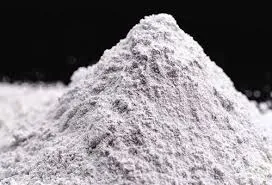
ធ្នូ . 10, 2024 03:08 Back to list
Exploring the Applications of Hydroxypropyl Methylcellulose in Tablet Formulations
The Versatile Uses of Hydroxypropyl Methylcellulose in Tablets
Hydroxypropyl methylcellulose (HPMC) is a versatile polymer widely used in the pharmaceutical industry, particularly in the formulation of tablets. This cellulose derivative has earned its place as a preferred excipient due to its unique physical and chemical properties, which enhance the performance and stability of various oral dosage forms. This article explores the uses of HPMC in tablet formulations, highlighting its benefits and applications.
What is Hydroxypropyl Methylcellulose?
Hydroxypropyl methylcellulose is a semi-synthetic polymer derived from cellulose, a natural biopolymer. Modified to improve its physicochemical properties, HPMC is non-toxic, biodegradable, and soluble in cold water. It is classified under the category of controlled-release agents and is essential in the manufacturing of both immediate-release and sustained-release formulations.
Role of HPMC in Tablet Formulations
1. Binders One of the primary functions of HPMC in tablet formulations is to act as a binder. Binders help hold the tablet ingredients together, ensuring that the tablet maintains its shape and integrity during compression and handling. HPMC’s excellent adhesive properties contribute to the compactness and strength of the final product, improving its mechanical stability and shelf life.
2. Disintegrants HPMC plays a critical role in the disintegration of tablets. When exposed to moisture, HPMC begins to swell, which aids in the breakdown of the tablet into smaller particles. This swelling action enhances drug dissolution and bioavailability, making HPMC an excellent choice for formulations requiring rapid disintegration.
3. Controlled Release Agents One of the most significant advantages of HPMC is its ability to modulate the release of active pharmaceutical ingredients (APIs). In sustained-release formulations, HPMC can form a gel-like matrix that allows for a gradual and controlled release of the drug over an extended period. This characteristic is particularly beneficial for drugs that require a slow release to maintain therapeutic efficacy or minimize side effects.
hydroxypropyl methylcellulose uses in tablets

4. Film-Coating HPMC is commonly used as a film-coating agent in tablet formulations. Its ability to form a uniform, smooth, and protective coating enhances the aesthetics of the tablets, making them more appealing to consumers. Additionally, film coatings can protect sensitive APIs from moisture, light, and air, thereby increasing their stability and shelf life.
5. Stabilizers and Emulsifiers In formulations that combine various components—such as oils and water—HPMC can act as a stabilizer and emulsifier. Its amphiphilic nature helps to maintain the stability of emulsions and suspensions in tablet formulations, ensuring consistent performance and quality.
6. Compatibility with Other Excipient Materials HPMC's versatility is evident in its compatibility with various other excipients used in tablet formulations. It can be easily incorporated with fillers, lubricants, and flavoring agents, thereby expanding the range of formulations that can be developed. This compatibility makes HPMC a go-to excipient for formulators aiming for efficient manufacturing processes.
Benefits of Using HPMC in Tablets
The incorporation of HPMC in tablet manufacturing offers several benefits
- Versatility HPMC can be utilized in various dosage forms, including tablets, capsules, and powders, making it a flexible choice for different pharmaceutical applications. - Improved Bioavailability Through its roles as a disintegrant and controlled-release agent, HPMC can enhance the bioavailability of drugs, leading to better therapeutic outcomes. - Customizable Release Profiles The varying grades of HPMC allow formulators to tailor release profiles according to specific therapeutic needs, providing options for both immediate and sustained release. - Patient Compliance With its role in optimizing tablet texture and flavor, HPMC contributes to improving the overall patient experience, which can lead to better adherence to treatment regimens.
Conclusion
Hydroxypropyl methylcellulose plays a pivotal role in the development of pharmaceutical tablets, offering a range of functionalities from binding and disintegrating to controlling drug release. Its versatility and compatibility with other excipients make it an invaluable asset in the formulation of modern tablets. As the pharmaceutical industry continues to evolve, the demand for effective and efficient excipients like HPMC will remain paramount, ensuring that patients receive high-quality medications that enhance their health outcomes.
-
Unlocking the Benefits of HPMC Products: A Gateway to Versatile Applications
NewsAug.07,2025
-
Unleashing the Potential of HPMC Ashland: A Comprehensive Look
NewsAug.07,2025
-
Tile Bonding Cellulose: The Key to Superior Adhesion and Durability
NewsAug.07,2025
-
Hydroxypropyl Methylcellulose Powder: The Versatile Component in Modern Pharmaceuticals
NewsAug.07,2025
-
Hydroxyethyl Cellulose: The Versatile Solution for Various Industries
NewsAug.07,2025
-
Hydroxyethyl Cellulose (HEC): The Versatile Polymer for Various Applications
NewsAug.07,2025







